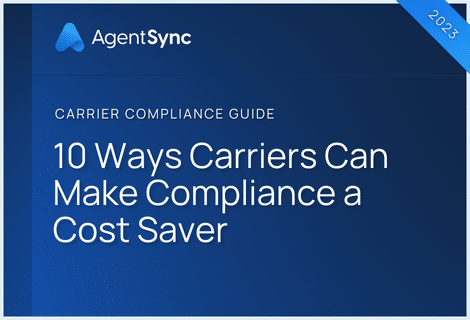

Surplus lines insurance, as an insurance that isn’t entirely regulated by state departments of insurance, is often the purview of managing general agents (MGAs) and managing general underwriters (MGUs). Yet this unique position often leaves those involved misunderstanding some of their compliance duties.
Let’s clear it up: Although surplus lines insurance requirements differ in many ways from the regulations of admitted insurance, there is no “exemption” from compliance duties. Non-admitted insurers and any MGAs or MGUs that traffic in surplus and excess lines would do well to observe compliance before – not after – regulators see them as a target for enforcing compliance.
We’ll spare you the sermon, however, and get straight to the heart of the matters of surplus and excess licensing and appointments.
What is excess and surplus lines insurance?
Also called non-admitted insurance, surplus and excess lines of insurance are insurance policies that aren’t offered by standard insurance carriers that are admitted to do business in a particular state, either because of the underwriting required for the type of coverage or for the amount of coverage necessary. A non-admitted insurer doesn’t have a certificate of authority in the state it’s selling into as a surplus insurer.
For instance, someone who needs to insure a waterpark may have a hard time securing coverage in Kansas based on the carriers available there. But an insurance carrier in Florida may be willing to cover that Kansas waterpark. There just aren’t enough Kansas waterparks to justify that carrier expanding operations into the state.
What is the difference between surplus lines and admitted insurance?
Admitted insurance policies are insurance policies that are fully vetted and sold with the explicit approval of a given state’s department of insurance, while surplus insurance policies aren’t. Put another way, a policy could be admitted in one state, but non-admitted in another. Non-admitted/surplus carriers or policies are regulated in their own domicile state or, if they’re offered by an alien (read: from a different country) carrier, they are vetted through an NAIC committee, but the coverage they offer in non-admitted states isn’t backed by a state guaranty fund. Policy premiums are also subject to state taxes, which is a stark difference from admitted coverage.
Even these definitions have some degree of nuance. Some states require admitted carriers to submit elaborate filings with underwriting and rate information for their admitted coverage. Others don’t have much rate-setting ability and don’t have extensive protocols for admitted coverage. But whatever the state’s baseline for admitted coverage or admitted carrier controls, the bar is set lower for the state to allow a surplus carrier to offer E&S policies.
What are some examples of surplus lines insurance?
Surplus lines insurance is a kind of property and casualty insurance. Often, policies are very specialized or they are new, to the point that there isn’t enough of a loss history to give a practical actuarial basis for pricing coverage.
Types of surplus lines insurance
Specific use-cases for surplus lines insurance are quite varied:
- Snowmobile insurance
- Inland marine coverage for contact lenses
- Kidnapping
- Fire extinguisher sales
- Excess policies on aircraft passenger liability
- Hot air balloons
What is a state-allowed non-admitted carrier?
States allow non-admitted carriers to transact in insurance business that isn’t offered by the state’s admitted market. Many states keep lists of non-admitted carriers they allow or approve for business in their state, and don’t allow any other non-admitted carriers.
To get on the approved non-admitted list, a carrier would need to apply with the state and likely undergo a very basic level of solvency verification. To use our waterpark coverage example, Kansas would do an examination to verify that the carrier is in good standing in its domicile state and is fundamentally solvent. But the state will not undertake the level of solvency evaluation it would require of an admitted carrier or a carrier domiciled in the state.
Who sells surplus lines insurance?
Individual producers who are licensed to sell surplus lines insurance can sell surplus lines insurance, to state the obvious. But insurance consumers can also go directly to a non-admitted insurance carrier to get their insurance if they know what they’re looking for. For instance, Lloyds of London is a very prominent name in surplus lines (bonus if you are interested in their former ghost insurance policies), so someone may go straight to the source for a policy on excess and surplus risks.
What license do you need to sell surplus lines policies?
An insurance producer who wants to sell excess and surplus lines policies will likely need a property and casualty license in their resident state (this isn’t a unilateral rule, but applies in most states). Then, on top of that basic P&C license, depending on the state, they may need to have an additional license for surplus lines, which could require its own exam, or a separate certification. Different states handle surplus licensing, well, differently, but you very much still need to keep your P&C license in good standing as well.
To get excess and surplus coverage, the producer who’s selling an excess and surplus lines policy usually has to demonstrate that the person trying to procure coverage was rejected or denied coverage by admitted carriers that do business in the state, or that the type of coverage they need is completely unavailable.
Do insurance agencies, also known as insurance business entities, need a license to sell surplus lines policies?
The answer depends on the state. Not all states require business entities to maintain a license, but, where they do, surplus lines is no exception and the agency will need its own firm-level license. Additionally, in many states, a firm that transacts in excess and surplus lines insurance policies will need to report a designated responsible licensed producer (DRLP) who holds an E&S license (and the supporting P&C license!)
If a business needs a surplus license, its producers will of course still need to maintain their licenses, because everyone in the insurance sales pipeline needs to be properly licensed in accordance with the particular state regulations.
Do non-admitted carriers need to appoint E&S licensees to do business?
If a non-admitted carrier is selling an insurance product, then any surplus lines licensee that is bringing that business to the carrier may need an appointment, depending on the state’s regulations.
Appointments for surplus lines producers can be incredibly misunderstood, and there are a few reasons behind the confusion:
- Surplus lines producers are often called “surplus lines brokers” because they are frequently sought out by consumers who approach them to find specialized coverage as opposed to representing the carrier and actively soliciting business on the carrier’s behalf. Yet, even a broker in the traditional sense may require appointments depending on the state.
- Appointment laws vary more state to state than producer licensing rules. Since non-admitted insurers by definition don’t operate in the non-admitted state, then they are often unaware of that state’s regulations and are inclined to operate under assumptions based on their experiences in their domicile state instead of concrete facts.
- Some states allow umbrella appointments, which allow individual producers to sell, solicit, or negotiate insurance for a carrier without a direct appointment as long as they are doing it under the “umbrella” of their parent agency, which does have an appointment.
- Many states have a “direct placement by insured” or an “independently procured coverage” provision that designates surplus business as having bypassed any direct involvement of a producer.
- Some states also have relationships whereby non-surplus-lines licensees (aka, regular insurance producers) can still accept payment for forwarding business referrals for surplus coverage.
- A lot of non-admitted coverage is actually offered via MGAs and MGUs, which may be delegated to handling appointments on the carrier’s behalf, or may not. This adds a layer of complication when MGAs and MGUs and even their parent carriers don’t have high visibility (or understanding) into each others’ compliance obligations. If a carrier isn’t monitoring its MGA partner’s non-admitted sales on its behalf, it may not even be aware of what appointments it should submit. And an MGA with a team that doesn’t realize it might have a duty to submit those appointments on the carrier’s behalf may be completely unaware of its compliance exposure.
It’s important to know and understand what factors apply to your specific jurisdictions. For instance, Kansas takes a strict “appoint everyone” approach, very clearly expecting that anyone who walks anywhere close to selling, soliciting, or negotiating insurance has a license and is appointed by whichever carriers they send business to. Some states require the appointment to be surplus-lines specific, while others require the appointment to be for P&C.
How can we be sure we’re compliant with our insurance requirements?
Boy howdy isn’t that the question. So, getting a legal and/or compliance team that maintains a robust working knowledge of state requirements and tracks individual producers on a spreadsheet is one way to go about it.
For the underlying P&C license and appointment requirements, carriers and agencies could get producer management software that bakes in basic requirements to make it easier and automatic to stay in compliance.
Or, you could go a step further and enlist a managed service provider to take care of your licensing and appointment obligations altogether, maybe one that uses automated, integrated compliance solutions to handle it so you don’t have to babysit.
However you decide to go about it, surplus lines compliance isn’t something you can just take a pass on.

